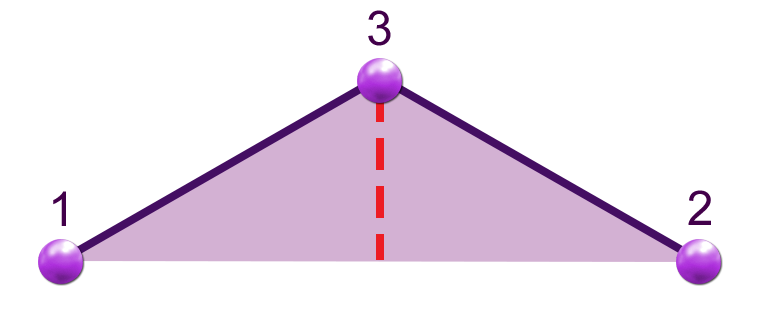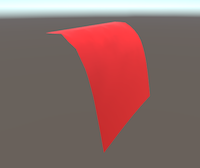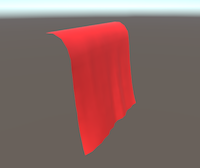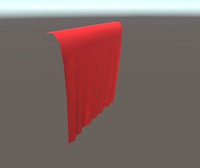Bend Constraints 
These constraints limit the amount of bending of a line segment defined by three particles: one at each end, and the third one in the middle of the segment. They are most commonly used to make cloth and ropes more rigid.

This diagram shows how a bending constraint works: the constraint would try to keep the third particle between the other two by moving it along the red dotted line, so that the segment defined by the three particles is completely straight.
Max bending
Amount of bending allowed before the constraints kick in, expressed in world units. Think of this as the maximum allowed length of the dotted line in the above diagram, so 0 means the constraints will always try their best to keep particles in a straight line. Use relatively low values, 0 to 0.04 gives good results.



Bend compliance (m/N)
This controls how much constraints will resist a change in curvature, once they're past the max bending threshold. At high values, constraints will offer little resistance to bending. Low values will increase the constraint stiffness. A value of zero (the default) will try to achieve complete stiffness, whether or not it is achieved depends on the simulation budget (timestep size and amount of bending constraint iterations).